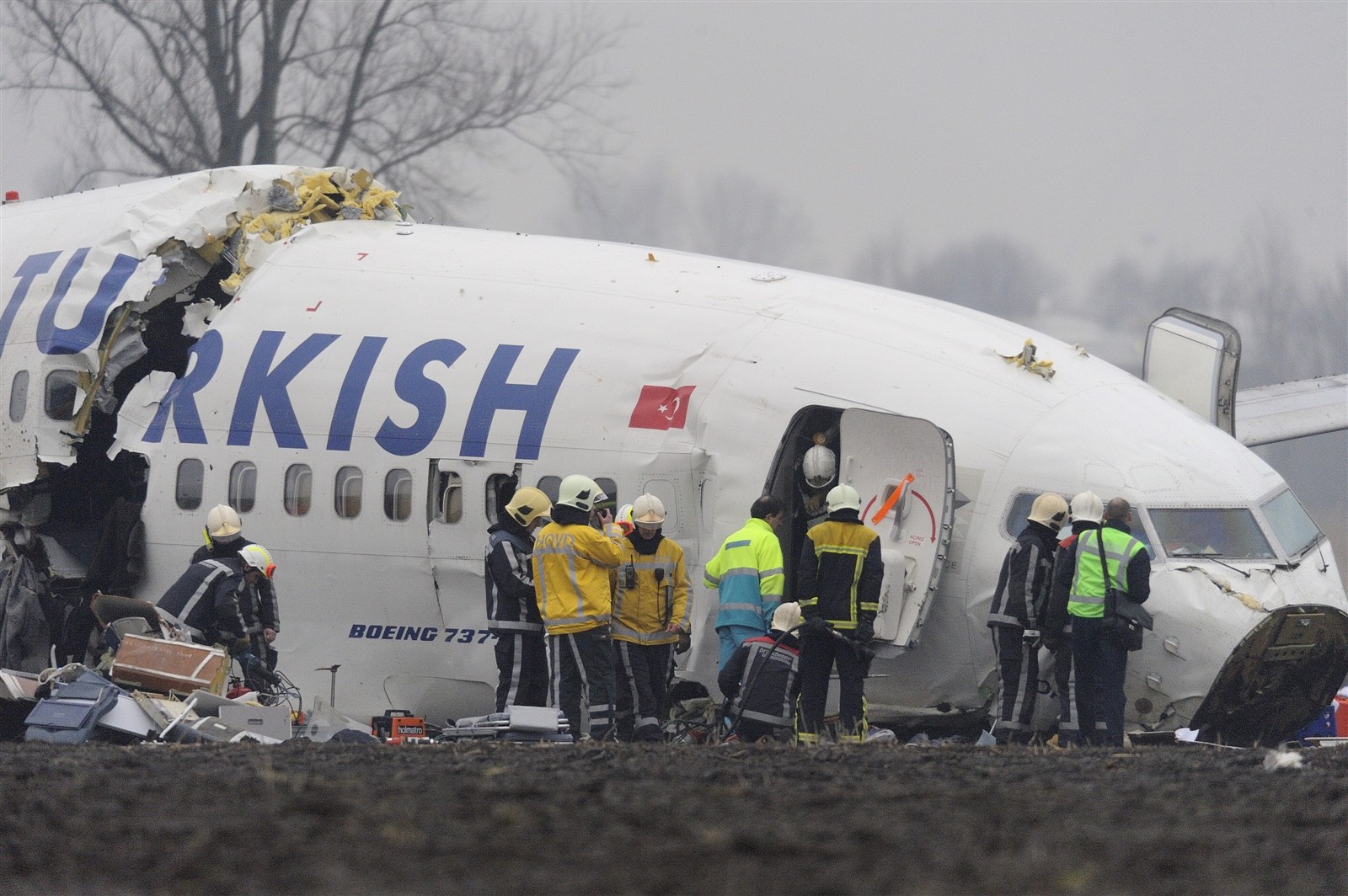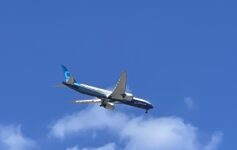
A lengthy New York Times story suggests Boeing squelched evidence and pressured investigators after the deadly crash of a Turkish Airlines Boeing 737-800 in 2009 in Amsterdam. But is there a link between the crash of that aircraft and the crashes of a pair of Boeing 737 MAX aircraft ten years later?
A Deadly Crash In 2009
Chris Hamby unpacks, in great detail, the crash and subsequent investigation of Turkish Airlines 1951, which crashed into field nearby Amsterdam Schipol on February 25, 2009. Three pilots, one flight attendant, and five passengers were killed.
Dutch investigators ultimately blamed the crash on pilot error, but new evidence has emerged that Boeing pressured investigators into shifting blame away from a faulty sensor and computer system (sound familiar?) and place it all onto the pilots.
What Happened On TK1951
The first officer piloting TK1951 was brand new to the Boeing 737-800 (also called 737 NG for “next generation”) jet. He was accompanied by the captain and a third pilot with 13 years of experience on the 737.
AMS was busy as usual and air traffic control instructed the flight deck to descend more quickly than normal while reducing speed. An automated onboard system called autothrottle was intended to help regulate this speed reduction.
The pilots failed to complete their pre-landing checklist and soon noticed the throttle was shaking as they descended to 450 feet. This signaled a stall was imminent. One of the pilots immediately pushed the lever forward, which should have caused the aircraft to gain speed, but was overrode by the computer system, which incorrectly calculated altitude, sensing the aircraft was moments from touchdown.
The captain took over, disabling the autothrottle and attempting to regain control of the aircraft. But by then it was too late and the plane crashed into a nearby field about a kilometer from AMS.
Were Pilots Really To Blame?
Dutch investigators found that a sensor to measure altitude on the exterior of the plane malfunctioned. At the same time, there was a redundant system onboard that did not malfunction and the flight crew did not notice the discrepancy.
Furthermore, the flight crew failed to notice that the autothrottle system did not maintain target speed. Instead, it continued to slow down.
I won’t speak for all pilots, but losing track of airspeed is a critical pilot error. Thus, the question is not whether pilots are to blame but whether they share all the blame.
And isn’t that the broader question with all of these crashes?
A Faulty Sensor Made The Crash More Likely
For TK1951, expert piloting would have prevented this crash…that is an objective, not subjective statement.
At the same time, it is fair to question whether the integrity of the aircraft and the safety of the passengers onboard was unnecessarily put at risk by Boeing cutting corners. The answer appears to be yes.
The autothrottle relied on just one sensor (the faulty one), not both. A more robust system could have discerned the discrepancy and more quickly alerted pilots.
Boeing recognized this potential fault five years earlier, but determined that pilots would recognize the problem and step into handle it should it arise. Boeing also developed a software fix for this program which would scan both sensors and disable automatic idling if the two sensors varied by more than 20 feet.
But that software fix was not compatible with the 737 NG used by Turkish, which featured an autothrottle computer designed and manufactured by a different company. It was only after the Turkish crash that Boeing developed a fix for those older 737 models (and the FAA required airlines to install it).
Furthermore, the computer controlling engine thrust only relied on the plane’s left sensor, even if the right sensor was “in control”. This information was not published in any manual.
In summary, software defects and a design flaw should have been overcome by the pilots, but undeniably played a role in the confusion that led to the crash.
The 737 MAX Link
It’s foolish to directly link the Turkish Airlines crash with the two 737 MAX crashes. The accidents involved totally different systems. And as a National Transportation Safety Board official told the New York Times:
“Each of these accidents were complex and dynamic events with many contributing factors. Boiling them down simply to the number of inputs ignores the many, many more issues that differentiate them.”
At the same time, the crashes share a common link: over reliance on a single sensor. Plus, a failure to make the cockpit idiot-proof…which perhaps should not be necessary, but may also have prevented three crashes. For Boeing, the sobering evidence is that the issues that led to all three crashes were known…and deemed not sufficiently important to require mandatory changes or retraining.
CONCLUSION
Don’t believe sensational headlines that Boeing is “responsible” for the 2009 crash. Based upon what we know, that is simply not fair considering all the errors the flight crew made. But the crash does establish an ongoing problem at Boeing, one of software deficiencies that do not appear to be taken seriously.
The crash of TK1951 and the 737 MAX crashes should prompt airlines to require greater pilot training and Boeing to develop more redundant systems. None of these crashes were necessary.
image: Radio Nederland Wereldomroep / Flickr CC 2.0




“Three pilots, one flight attendant, and five pilots were killed.”
Maybe check this sentence again
No idea if this is true but it wouldn’t surprise me. Just by having a look at the strange design of the 737 compared to any other plane one wonders if the thing can actually fly.
We now know from the 737Max that the hardware design flaw cannot be sufficiently corrected with software. So the older types may have stability issues as well.
Capitalism. Win at all cost and blame failure on others. At least FAA found its spine now. But it was probably self preservation before it lost all credibility.
In fairness this isn’t just a Boeing problem. The Airbus 320 series has its own list of issues which are well known but remain uncorrected.
For example there is an ongoing issue that can cause an uncommanded aircraft pitch down. The solution is for pilots to shut off two of the three air data systems and its a procedure that we are required to commit to memory. And it’s both the FAA and EASA that continue to tolerate known problems that should be fixed.
Clearly that’s something that should change. When a problem gets identified it should be fixed. And that process should not take years.
But the need for pilots to be properly trained will always be there. Recent events have made that all the more clear.
Can really sure i’ve posted this sonewhere in this blog.
In accidents involving Airbus, airbus’ officer or representative go to the scene only when called or requested by authority. In Boeing’s, they come first hand with the intention of “helping” this investigation. A fresh example would be LiooAir JT610 was initially declared to be “not airworthy”. Well… Considering its one of the biggest export of a certain country, it sure would do whatever it takes to protect the industry. Nationalism? Who knows…. Hypocritsm? Again, who knows…..
>”throttle was shaking”
Stick, not throttle. An imminent stall initiates the stick shaker, and the stick is what needs to be pushed forward (if altitude allows) in addition to throttles to exit the situation.
This really was not a sensor problem but failure of the pilots to maintain proper speed. When you have a stick shaker indicating near stall, you don’t set auto throttle. You immediately go to TOGA power by disengaging the Autothrottle with the side button and push the throttles all the way forward. Yes pushing the yoke down is the first thing although given being in final approach and close to the ground in a landing configuration full throttle is how to handle this especially that engines are usually at idle for landing. Even engaging autothrottle to higher power and it not happening should be noticed in seconds. Just like the pilots of Asiana in San Francisco these pilots failed to maintain the most basic of parameters.
The Max issue is very different. For all the crap Boeing is getting, the A320 neo has similar center of gravity problems as the Max and has to block seats to adjust the center of gravity. The indictment against Boeing is that it made the Max like airbus with automated MCAS system instead of following the traditional Boeing design of full pilot control and minimizing the limitations like airbus has with its computer block on pitch.
> is it related?
Simple answer: Nope. The MCAS system was new to the MAX.
A more closely related crash was the Asiana Flight 214 crash at SFO. The pilots in that one also didn’t bother paying attention, let the airspeed get too low, dropped off the glide slope, and impacted short of the runway.
There’s really no excuse for not bothering to pilot the aircraft.